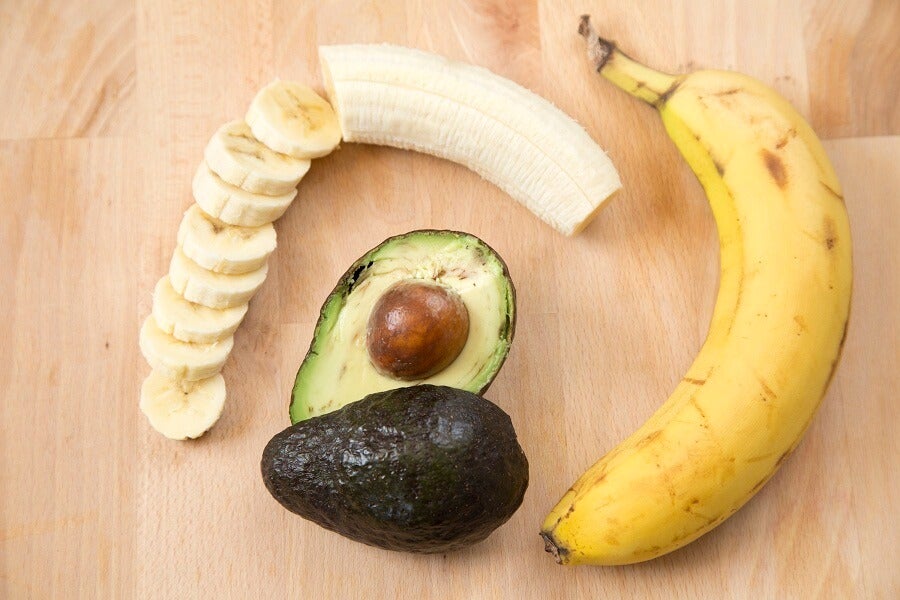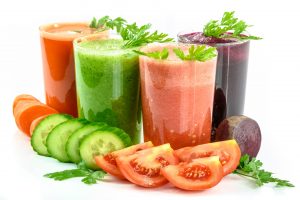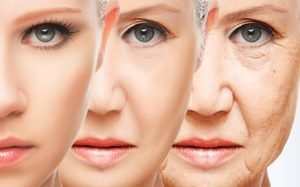Control high blood pressure: beyond salt

Eliminating salt intake is an unnecessary and insufficient measure to control high blood pressure. The development of new approaches is urgent. What can we do about it?
What steps should be taken to control high blood pressure? High blood pressure affects billions of people worldwide. Its pharmacological control ends up requiring combined therapies that represent an unsustainable health cost.
Eradicating the consumption of salt is unnecessary and insufficient . Thus, it is essential to adopt non-pharmacological measures that allow controlling hypertension efficiently.
Current research shows that, far from restrictive guidelines, adopting a healthy lifestyle is the ideal method to control high blood pressure.
What is hypertension?
The concept of blood pressure (BP) refers to the pressure exerted by the blood on the arterial walls . Systolic blood pressure (TAs) is referred to to refer to the pressure existing at the moment when the heart contracts and expels its blood to the rest of the body.
On the other hand, diastolic blood pressure (TAd) refers to the value of blood pressure when the heart fills with blood. There is talk of Hypertension (HTN) when TAs> 140 mmHg and / or DBP> 90 mmHg in 3 consecutive measurements not.
HTA affects billions of people
HTA is considered a public health problem that affects billions of people worldwide. It is estimated that 30% of the population suffers from it and its prevalence exceeds 50% in subjects over 50 years of age. When not properly controlled, it ends up seriously damaging the heart, brain, eyes and kidneys.
In fact, HT is considered the leading cause of stroke and heart failure and the second leading cause of chronic kidney disease. Likewise, it is behind some of the main causes of chronic blindness. Furthermore, according to WHO data , HTA is behind 15% of deaths worldwide.
It is clear that its control is essential. However, the high prevalence makes the cost of pharmacological treatment unsustainable. Furthermore, the progressive need for combined pharmacological therapies leads to an increase in side effects.

The number of patients affected by high blood pressure is quite alarming. In fact, the disease is classified as a public health problem.
What can we do to control high blood pressure?
Lifestyle is one of the factors with the greatest impact on the genesis of HT and the good news is that it is a modifiable factor. Pharmacological treatment should be reserved for cases of hypertension resistant to other measures.
Until now, non-pharmacological treatment has been based almost exclusively on reducing salt intake to avoid its attraction to liquids. But is this a necessary and sufficient measure?
Avoiding the consumption of salt is not necessary
Current scientific evidence shows that salt intake does not increase AT in all people . Some examples are:
- The study by Baker, Curhan, de Jong, Forman, Gansevoort & Scheven (2012) concluded that salt intake only increased AT in subjects with pre-existing vascular damage.
- The research by Aros, et al. (2013) found that, despite its high salt content, the consumption of gazpacho was inversely correlated with the TA figures.
The consumption of salt only impacts on the AT of the so-called «subjects sensitive to salt» and these only represent 50% of the cases.
However, as long as the cause-effect relationship is not known exactly, and there are no tools available that allow easy detection of the aforementioned sensitive subjects, it is advisable to maintain a prudent consumption (1 teaspoon of salt per day = 5 grams of salt per day = 2.3 grams of sodium per day).
The consumption of ultra-processed foods is not recommended since they have a very high salt content. Furthermore, they are harmful for other reasons.
How to control high blood pressure beyond salt?
In general terms, an adequate approach to hypertension involves taking measures that: normalize the volume of liquids, reduce the viscosity of the blood, increase the caliber of the arteries or avoid arterial stiffness.
Thinking about the pressure inside a pipe can help us understand the strategy: normalize the flow, reduce impurities in the water, put larger pipes or make them from a flexible material.
Increase the contribution of potassium, calcium and magnesium
The beneficial role of potassium in the control of blood pressure is indisputable. This is because it promotes urinary sodium excretion, relaxes smooth muscle, and decreases peripheral resistance.
In other words: it normalizes the circulating blood volume and favors the adaptability of the arteries.

Eating potassium-rich foods, such as avocados and bananas, helps keep AT figures back to normal.
Calcium and magnesium have also been shown to be effective in controlling BP. Calcium allows a good management of BP due to inhibition of the Hypertensive Parathyroid Factor (FPH).
Magnesium does this by a mechanism that is still unknown. However, a higher incidence of hypertension has been detected in populations with a deficit consumption of this mineral.
Other minerals such as zinc, manganese, and copper may be involved in the genesis of HT. However, the research on this is too immature to draw conclusions on this matter.
Increase fiber and protein intake
Consuming 25-40g / day of fiber has a reducing effect on BP due to:
- It decreases vascular resistance and improves the entry and exit of blood through the heart.
- It slows down the activity of an enzyme (ACE) in charge of generating a hypertensive substance (angiotensin II) and inhibiting a hypotensive substance (bradykinin).
- Increases the retention of hypotensive minerals such as potassium or magnesium.
- The foods that contain it are usually very rich in antioxidants and these have also been shown to be beneficial in controlling blood pressure.
Vitamins D and K are essential
The combination of low levels of vitamin D and K has been associated with an increase in BP. Both appear to be actively involved in the regulation of a protein that inhibits calcification of the arteries (MGP): vitamin D increases its quantity and vitamin K activates it.
This is a very novel finding (the first investigation in this regard was published in March 2017) and therefore new investigations are required. However, the research by Beulens, Brouwer, Cepelis, van Ballegooijen, van Schoor & Visser (2017), after analyzing 171 subjects, firmly concluded that both vitamins are playing an important role in the development of HT.
Reduce the consumption of carbohydrates with a high glycemic index
The excess of glucose in the blood supposes an increase of the viscosity of the same and, therefore, an increase of the figures of TA . In fact, people with diabetes mellitus often end up developing HT.
Avoid eating harmful fats
GMO fatty acids and most saturated fats predispose to HT. Its effect is due to the accumulation of cholesterol inside the arteries due to an increase in LDL protein and a reduction in HDL.
Maintaining proper hydration helps control high blood pressure
Adequate hydration favors blood purification and reduces its viscosity . This assumes lower TA figures.

Cardiovascular physical activity is key to controlling high blood pressure
The most sedentary individuals have a 30-50% higher risk of suffering from HT. The Spanish Heart Foundation considers that cardiovascular physical activity, such as going for a walk , constitutes one of the most suitable measures for BP control.
- Its benefits are attributed to its vasodilator effect, the elimination of sodium through sweat and its contribution to weight loss.
Excess body fat supposes a risk of hypertension of 2 to 6 times greater, being even higher when the fat accumulates in the trunk (central obesity or “apple type”).
Ensuring adequate night rest
Sleeping well is essential. Different studies link sleep problems with a higher prevalence of HT. Likewise, sleeping well has been shown to help reduce BP levels .
Good stress management is key to controlling high blood pressure
Stress activates a whole series of hormones that stimulate the sympathetic nervous system and this is directly related to AT. Thus, learning to manage stress would mean a considerable reduction in BP figures.
Avoid tobacco and alcohol use
Tobacco and alcohol are toxic substances capable of increasing AT. The hypertensive effect of tobacco is due to the increase in blood viscosity. Alcohol does so because of its role in the genesis of various health conditions directly related to the increase in AT.
- Some examples are diabetes mellitus, hypercholesterolemia, and central obesity.
The intestinal microbiota is key in the control of arterial hypertension
In the same way that occurs with other chronic pathologies, those who suffer from HTN share characteristics in the intestinal microbiota that have not been found in those without HTN. Some hypotheses suggest that it could be due to the consumption of salt.
The reduction of this bacterial population was associated with an increase in pro-inflammatory T (H) cells 17 and, therefore, with an increase in AT. The conclusions were identical when conducting a pilot study with 12 people. The gut microbiota may have the answer to why “only 50% of people with high blood pressure react negatively to salt intake.”
In terms of diet, the Mediterranean diet is ideal to be able to apply all the nutritional recommendations mentioned. However, remember that it is necessary to maintain a healthy lifestyle that includes: sleeping well, being active, managing stress and not consuming toxic substances . Furthermore, supplementation with Lactobacillus could contribute to achieving better results.
The best way to control high blood pressure is to take a comprehensive approach that goes beyond salt intake.







